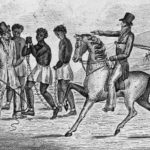This short video examines the gradual but limited emancipation that occurred before the Constitutional Convention. In Northern states, fewer slaves and less racist sentiment enabled states such as Pennsylvania to pass gradual emancipation laws while even some Southern states, where racism was more entrenched, made it easier for slaves to be freed. However, as Professor John Kaminiski notes, the great political leaders of the South took no bold actions to free their slaves.
Juneteenth General Order
In this activity, students will carefully analyze General Order 3 from Major General Gordon Granger which informed the people of Texas that “all slaves are free.” This activity is appropriate as a conclusion to the Civil War and the beginning of Reconstruction.
Women’s Contributions in the Civil War
In this lesson, students will view videos to visit Civil War-related sites in Alexandria, Va., where women worked as nurses, sold goods to soldiers and aided communities of newly-freed slaves.
Slavery and The Constitution
Explore the text and history of the Three-Fifths Clause, the Migration and Importation of Slaves or Slave Trade Clause, and the Fugitive Slave Clause.
Emancipation of Slaves Under the Constitution
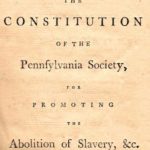
This short video illustrates the approaches taken by the various states towards freeing their slaves. Pennsylvania and New York were among the first to provide a path to gradual emancipation, due in large part to the influence of Quakers and Methodists. Professor John Kaminiski discusses the various criteria for manumission: the age of the individual; what percentage of the individual’s racial background was African-American; and how well prepared the individual was for life as a freeman.
Thomas Jefferson and Slavery
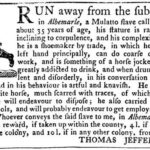
Thomas Jefferson, the man who wrote the famous line “all men are created equal,” was a life-long slave-owner. Over the course of his life, he would own 600 human beings, and at any given time there would be roughly 100 slaves living and working on and around Jefferson’s plantation and farms. This handout describes Thomas Jefferson’s views on slavery.
Dolley Madison and Slavery
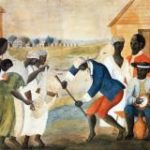
This short video presents Dolley Madison as a typical member of the antebellum slaveholding gentry. Dolley, like her southern contemporaries, saw slaves as property. Professor Catherine Allgor notes that when Dolley Madison began selling her slaves in the 1840’s, she was strongly criticized by the abolitionist press.
George Washington and Slavery
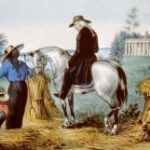
This short video analyzes Washington’s experiences as a “queasy slaveowner.” Having inherited and traded slaves as a younger man, Washington in later life gradually moved from being doubtful about the morality of the institution to being certain that the institution was “against the law of nature.” Professor W. B. Allen contends that Washington’s decision to free his slaves upon his wife’s death ensured that Mount Vernon’s enslaved families would remain intact and would be provided for.
“What to the Slave Is the Fourth of July?”
Frederick Douglass earned wide renown as an outspoken and eloquent critic of the institution of slavery. In this speech before a sizeable audience of New York abolitionists, Douglass reminds them that the Fourth of July, though a day of celebration for white Americans, was still a day of mourning for slaves and former slaves like himself, because they were reminded of the unfulfilled promise of equal liberty for all in the Declaration of Independence.
Meet People from the Past
Bring Mount Vernon into your classroom with these videos of people from George Washington’s world. See how he is viewed through the eyes of his family, friends, fellow revolutionaries and slaves.
